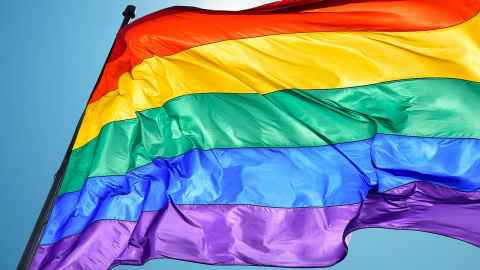New survey confirms Rainbow Kiwis’ challenges
13 November 2021
Opinion: Latest statistics on the rainbow community in NZ should lead to changes in the way public agencies support Kiwis hit by inequity, writes John Fenaughty.

A report released by Stats NZ on the LGBT+ data from the Household Labour Force survey reinforces findings from a range of local studies that shine a light on the additional challenges Takatāpui, LGBTQIA+, MVPFAFF+ people face.
The findings also raise further questions as to why rainbow populations, despite facing serious challenges relative to other groups, continue not to be listed as a priority in the health system reforms.
The 4.2 percent of people in the Stats NZ study who were willing to identify as LGBT+ have further demonstrated that we are a key population group in Aotearoa New Zealand. This is a conservative estimate of our numbers. Not all of us will identify with the terms used in the survey and many who do identify with these terms will not be willing or able to say so in a government survey.
Nonetheless, the findings show that transgender and non-binary people, as well as LGB+ people, are represented across all ages surveyed, all ethnicities reported, and across urban and rural locations around Aotearoa New Zealand. Had the survey included intersex people, we would see them also visible in these areas too.
The findings show that we are productive members of community. We have worked hard to get higher levels of qualifications on average than others. We are often just as likely as others to be involved in parenting children.
But the data shows that for those under 40 years of age, despite a greater proportion of us having better qualifications than the average person, on average receive a take-home income lower than the norm. Yet, despite earning less on average, we are also paying a lot more for accommodation, usually rental accommodation. Worse, that accommodation is more likely to include problems with mould or dampness and struggles with staying warm.
We are also more likely to report being disabled. So, despite our resilience in getting a good education, and in finding employment and accommodation, the Stats NZ data show that many of us are struggling with the extra pressures that we experience. At least twice the proportion of LGBT+ people in the Stats NZ survey reported symptoms of anxiety and depression, compared to cisgender and heterosexual people.
The representative Youth’19 survey also found the proportion of rainbow secondary school students with depressive symptoms was at least twice that of cisgender and heterosexual students. The Counting Ourselves transgender health survey results released in 2019, the Honour Project Aotearoa findings for experiences for Takatāpui and rainbow Māori and released from 2020, and the recent Identify Survey of rainbow 14-26 year olds, all highlight concerning mental health outcomes for rainbow populations.
Going back, in 2019, Stats NZ’s General Social Survey report, with only a focus on people with different sexualities, also noted “wellbeing disparities between groups”. The Youth 2000, Youth ’07, and Youth ’12 surveys have all identified serious disparities for rainbow young people compared to other young people.
So, the disparities we see in the Stats NZ study here are nothing new unfortunately. This is not a surprise to anyone working in this area. What is new are the questions that this data will raise. Do these findings, on top of the longstanding documented disparities for our communities, finally mean the time has arrived for our population to be a named priority in health policy? Will this data finally tip the balance, so like other named priority groups facing inequality (for example, Pacific and disabled people), we will also be formally recognised as priority groups in health policy?
Will this data be the tool we need to finally see better data collection about our experiences in health? Will it be the moment we see better recognition of our communities in data on housing? In education? In our interactions with WINZ? In Oranga Tamariki data? The list goes on.
Will this also be the moment we review our knowledge gaps for what is happening for our communities across Aotearoa New Zealand? Will this be the moment the Health Research Council finally recognises the equity issues facing our communities and sets up separate funding and review processes for our communities so we can better understand our experiences?
Let’s hope this is exactly the moment for that change, and not another data point in a sorry story about a community whose needs remain overlooked and undervalued.
Dr John Fenaughty is a senior lecturer in the Faculty of Education and Social Work.
This article reflects the opinion of the author and not necessarily the views of the University of Auckland.
Used with permission from Newsroom New survey confirms Rainbow Kiwis’ challenges 13 November 2021.
Media queries
Alison Sims | Media adviser
DDI 09 923 4953
Mob 021 249 0089
Email alison.sims@auckland.ac.nz